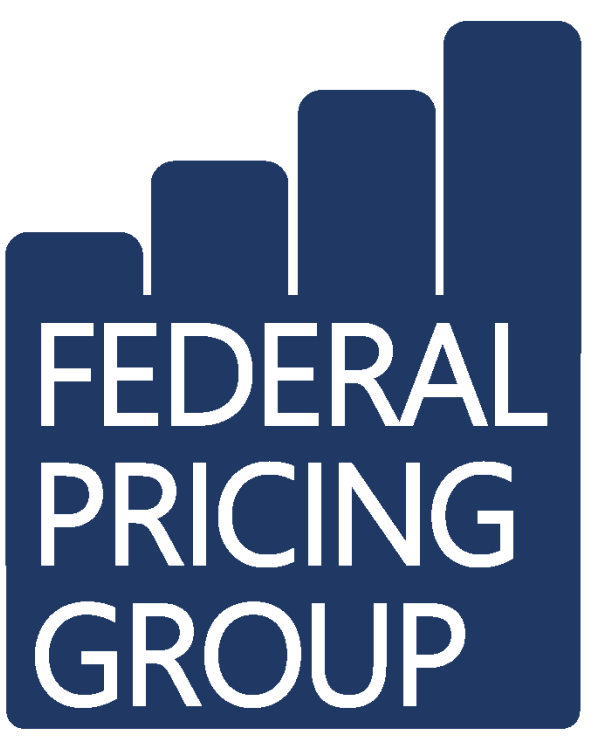Help! The Government Has Pricing Questions! What Now?
- By Mike Gallo
- •
- 05 Nov, 2018
- •
After months of wondering what happened to your proposal submission, the Government has responded with pages of pricing questions. Now what? Here’s three tips to help you answer pricing questions.
Common Issues
Generally, cost and pricing questions fall into four broad issue areas:
- Omission The Government believes something is missing from your price proposal. It could be something as simple as a sub-total calculation error or something more serious such as unpriced tasks that are identified in your technical volume, but not included in your price.
- Necessity The Government believes something priced into the proposal is not relevant or ‘in-scope’. Sometimes a lack of a clear explanation of how costs were derived and or calculated can also lead the Government to question certain costs. Lump sum costs, without underlying details and explanation, are a great example of this.
- Consistency The Government believes something in your pricing doesn’t align with your technical volume. This can occur when last minute pricing drills shave costs (such as staff hours), but the change is not reflected in the technical volume (or vice versa).
- Reasonableness/Realism If the Government says a particular cost appears ‘unreasonable’, they’re saying they think it’s too high. Conversely, if the Government says a particular cost appears 'unrealistic', they’re concerned it's too low.
Three Helpful Tips
How should companies respond to these questions?
1. Don't fight the Fed.
Even if you disagree with the evaluator's question, keep in mind there’s something unclear in your proposal that created ambiguity and doubt in the evaluator’s mind. Don’t take it personally. Avoid argumentative language in your responses that just serves to aggravate the evaluators and doesn’t help you to address the issues raised. The fact that the Government may think a proposed cost might be too high (or too low) doesn’t necessarily mean you should revise your price. Often the Government uses terms such as ‘Justify’, ‘Substantiate’, ‘Clarify’, ‘Explain’, etc. to describe their need for additional information.
2. Fortify answers with facts and data, not more unsubstantiated assertions.
The four main issues: Omission, Necessity, Consistency, and Reasonableness/Realism almost always boil down to a lack of adequate documentation and substantiation as a root cause. Provide corroborating evidence to justify unit costs and rates. Clearly explain how costs were derived and/or calculated.
3. Make it Easy for the Evaluator.
If you elect to revise your pricing, clearly track those changes in your pricing model. This is especially important when there are numerous and significant changes to price. The Government needs to understand how and why your price changed. Highlight cost elements that were added to your proposal. Identify unit cost and rates that were revised. Flag items that were removed from your revised proposal. Also ensure to provide a brief narrative summarizing what has changed in your revised proposal pricing.
Conclusion
Breathe a little sigh of relief. Your firm has progressed through 1st cut. While your firm hasn’t won the contract (yet), the Government believes your proposal has enough merit and deems it worthy enough for additional consideration.
Remember, the Government is evaluating MANY proposals in addition to your proposal. Contracting officers want to progress to contract award, now! Help them by clearly, accurately, comprehensively responding to evaluator pricing questions. Give the evaluators the missing pricing facts and data they need so they can demonstrate they evaluated your winning proposal objectively, fairly, and consistently.
About the author: Mike Gallo is Partner and Principal Consultant at Federal Pricing Group, a consulting firm focused on providing expert contracts pricing to small and mid-sized federal government contractors and cost-related acquisition support services to federal agencies. Learn more at https://www.federalpricinggroup.com/.

In this case, the protestor lost to a competitor's lower evaluated price because the protestor's bid of $251M ($22M below their estimated cost) was adjusted by the Army to $271M. The GAO sustained the protest and said the Army erred in adjusting the protestor's price because the protestor made a credible contractually binding offer to limit their price.
Cost Realism and Probable Cost Adjustments
Normally, on cost-type contracts, Government evaluators will upwardly adjust the price of proposals deemed unrealistic (i.e., too low). These adjustments can unfavorably swing the source selection decision to another competitor. However, when offerors agree to cap rates or otherwise establish a ceiling on their price, agencies may not adjust that offeror's price because that portion of the proposal is now considered fixed price.
What key ingredients in this protestor's proposal convinced the GAO that the Army's probable cost adjustments were unreasonable and inappropriate? Likewise, what key questions should government evaluators consider to determine if a below-cost offer is credible and should not be adjusted?
They ensured compliance
Key evaluator question: Does the solicitation restrict or forbid below-cost offers?
The protestor correctly understood that while the RFP did not explicitly restrict or forbid below-cost offers, the instructions warned offerors that any inconsistency between promised performance and proposed cost required adequate explanation (including business policy decision to absorb a portion of the estimated cost). Consequently, failure to do so could result in a finding of Technical Unacceptability or a finding that a proposed cost is unrealistic for work to be performed.
They fully costed the contract
Key evaluator question: Has the offeror adequately resourced and costed the effort in accordance with the Performance Work Standard (PWS) and the technical proposal?
The protestor identified and estimated the costs of all resources necessary to meet the PWS requirements and provided enough detail to fully demonstrate that the resources identified in their technical proposal aligned with the resources included in their pricing proposal.
They explicitly quantified the discount
Key evaluator question: Has the offeror clearly and unambiguously quantified the cost/price reduction?
After building the fully costed proposal, the protestor added a separate cost element summary line-item that explicitly quantified the costs to be absorbed by the protestor (which was $22M), thus lowering the overall price.
They clearly articulated their binding intent
Key Evaluator question: Does the offeror understand will not fully recoup their costs?
The protestor's proposal clearly stated they were making a business decision to 'absorb' certain costs (which were redacted in the published protest) and included a legally binding promise to limit the cost to the agency to a specific total throughout the performance. The terminology here was key because the protestor wasn't decrementing, offsetting, or otherwise adjusting their cost estimate (which could introduce an inconsistency between the priced resources and the resources identified in the technical proposal). By using the term 'absorbing,' the protestor communicated their intent to incur these costs during contract execution and would not invoice the Army for these costs.
They identified all parties involved in the discount
Key Evaluator Question: Which teammates are absorbing costs?
The protestor clearly stated their subcontractors were not part of the cost absorption decision and reiterated that their subcontractors submitted fully costed proposals.
They explained how these costs would be absorbed
Key Question: How will the offeror pay for/fund the cost absorption?
The protestor stated they intended to pay for these costs using corporate funds. This statement reinforces and backs up the earlier claim that the price reduction is not a cost reduction via the reduction of resources assigned to the contract.
They declared their acknowledgment and acceptance of risk and responsibilities
Key Evaluator Question: Does the offeror commit to meet the performance requirements and standards of the PWS?
The protestor's proposal included a formal statement acknowledging and accepting the risks and responsibilities associated with their business decision. This included key statements reiterating their understanding of the financial impact of the business decision and commitments that this decision would not impact their operational approach to managing and executing task orders to meet PWS requirements and associated performance standards.
They demonstrated access to funds
Key Contracting Officer Question: Can the offeror afford to invoice for less than their costs?
This is a responsibility question per FAR Part 9.104 – not a cost realism question that impacts evaluated price. It's an important ingredient that ensures contract award eligibility. The protestor's proposal documented that they were a financially sound and transparent publicly traded corporation with a strong cash position and fully capable of absorbing the cost of this Business Policy Decision.
Final Thoughts
Pricing contracts below estimated costs is a risky strategy and not is a strategy companies should normally adopt. However, given the right opportunity, companies can use these eight key points as a high-level approach to building a credible below-cost offer. The precise steps to adopt a below-cost offer for a specific opportunity will depend on the specifics of each solicitation and your team's unique financial circumstances. For evaluators, this framework also represents a helpful guideline for determining the credibility and realism of a below-cost offer.
About the author: Mike Gallo is Partner and Principal Consultant at Federal Pricing Group, a consulting firm focused on providing federal contracts pricing analysis and pricing volume support to small and mid-sized federal government contractors and cost-related acquisition support services to federal agencies. Learn more at https://www.federalpricinggroup.com/.

